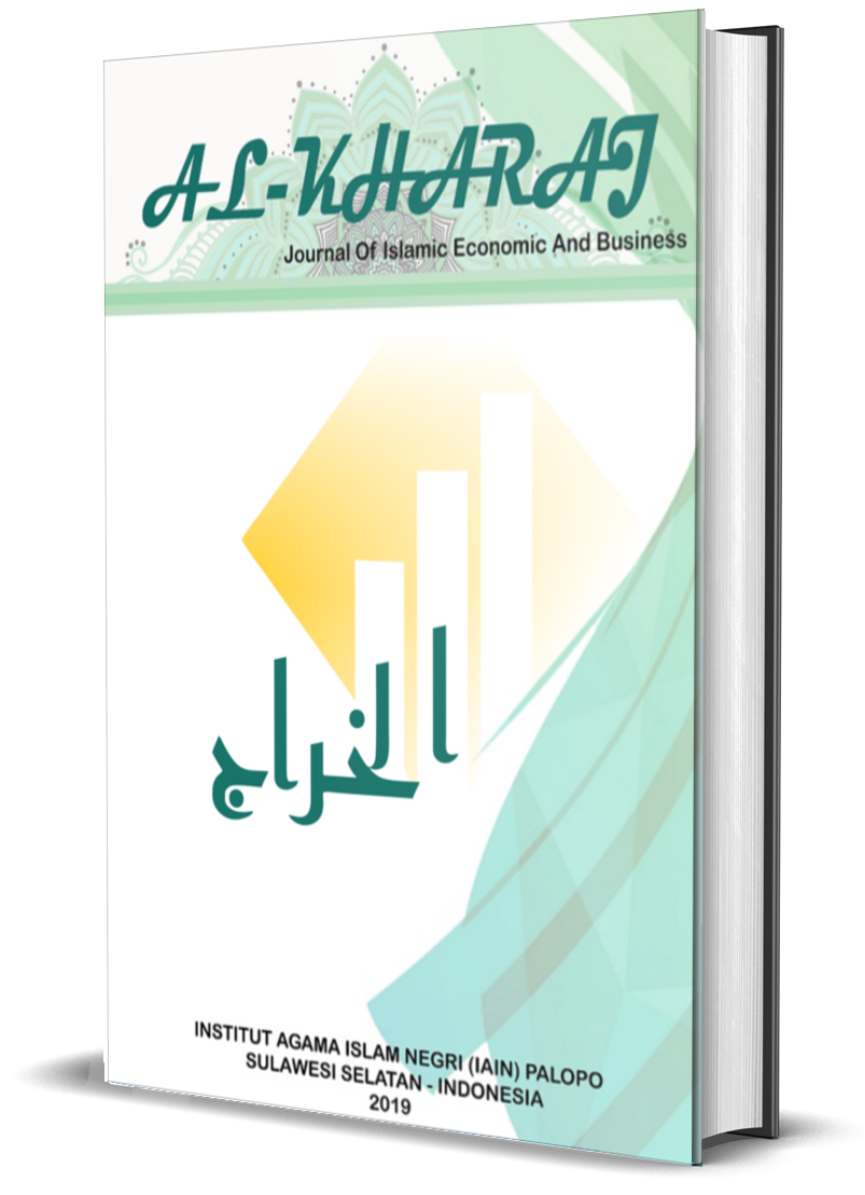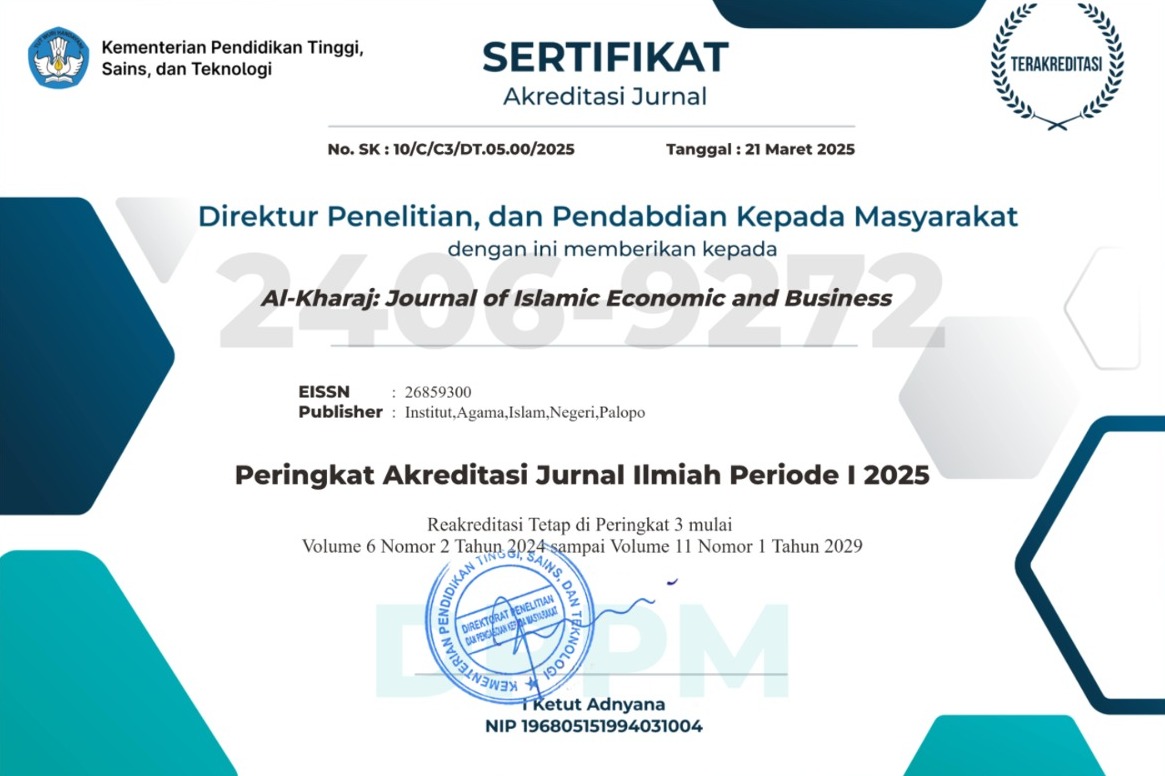Digital Poster Plagiarism Perspective of Mui Fatwa Number 1 of 2003 Concerning Copyright
DOI:
https://doi.org/10.24256/kharaj.v7i2.7425Keywords:
Plagiarism, Digital Poster, Copyright, MUI FatwaAbstract
This research is motivated by the increasing issue of copyright infringement on posters in the digital era, where the ease of creating and distributing digital works opens up opportunities for plagiarism practices.As technology advances, it is becoming easier for people to find and download images or works that should be protected, such as graphic designs posted online on social media. These designs can be copied and shared quickly, any original creation should automatically be protected. These issues should be reason enough to update the law.Furthermore, this study aims to discuss the causes of digital poster plagiarism in Indonesia, legal protection for creators due to digital poster plagiarism, and analyze the binding force of the MUI fatwa regarding digital poster plagiarism, especially in the perspective of MUI Fatwa Number 1 of 2003. This study uses the Normative Juridical Research Method with a Conceptual approach, by examining MUI Fatwa Number 1 of 2003 concerning Copyright and the applicable laws and regulations in Copyright Law Number 28 of 2014. The results of the study indicate that copyright infringement, imitating or copying concepts, visual elements, and plagiarism through social media without permission from the original creator, especially for this digital poster, is haram. This fatwa expressly recognizes copyright as one of the huquq maliyyah (property rights) protected by sharia (Islamic Law). In this case, public awareness of digital poster plagiarism is very important. Legal defense efforts must be in line with strict law enforcement and adequate punishment for copyright violators by authorities based on existing laws and regulations.
References
Ahya Mofidi Lahida, & Adi Sulistiyono. (2024). Copyright Protection in the Field of Graphic Design in the Sale of Design Services on Social Media. Jembatan Hukum: Study of Legal, Social and State Administration Sciences, 1(3), 01–08. https://doi.org/10.62383/jembatan.v1i3.361
Cipta, H. (2003). Fatwa of the Indonesian Ulema Council Number 1 of 2003 Concerning Copyright. Indonesian Ulema Council, 412–418.
Cipta, H. (2014). Law Number 28 of 2014 Concerning Copyright. 1.
Fatimah, DG (2018). Fear of Failure and Plagiarism Intentions in Students. Jurnal Psikologi Ulayat, 5(1), 45–59. https://doi.org/10.24854/jpu12018-177
Husna, S., & Permata, C. (2024). Obligation to Pay Royalties for Song Covers: Perspective of DSN Fatwa Number 1 of 2003 Concerning Copyright (Case Study of YouTubers in Medan City). UNES Law Review, 6(2), 7637–7649.
Karimun, Muhammad, S. (2021). Digital poster design by students of class X MIPA 2 SMA Negeri 3 Demak. Eduarts: Journal of Arts Education, 10(2), 65–75. https://journal.unnes.ac.id/sju/index.php/eduart/article/view/46671%0Ahttp://journal.unnes.ac.id/sju/index.php/catharsis
Mulyawan, A., & Priyana, P. (2021). Graphic Design Copyright Protection in Print on Demand Business. Kertha Semaya Journal, 9(8), 1488–1500.
Republic of Indonesia. (2008). Law on Electronic Information and Transactions. Bi.Go.Id, September, 1–2. https://peraturan.bpk.go.id/Home/Details/37589/uu-no-11-tahun-2008
Royhan, MG, & Ngabekti, DK (2021). Problems of Visual Communication Design and Plagiarism in the World of Graphic Design. CITRAWIRA: Journal of Advertising and Visual Communication, 2(1), 86–95. https://doi.org/10.33153/citrawira.v2i1.3671
Sava Waroha Sasikirana Haqa, YTM (2025). Analysis of Digital Painting Plagiarism Through Instagram Reviewed According to the Journal of Law and Public Policy Studies. 2(2), 1382–1390.
Suntoro, S., Zulaeha, I., & ... (2022). Correlation of Digital Literacy and Student Plagiarism. Proceedings of the Seminar …, 1058–1063. https://proceeding.unnes.ac.id/index.php/snpasca/article/view/1630%0Ahttps://proceeding.unnes.ac.id/index.php/snpasca/article/download/1630/1107
Syahputra, R., Kridasaksana, D., & Arifin, Z. (2022). Legal Protection for Musicians Over Copyright in Royalty Payments. Semarang Law Review (SLR), 3(1), 84–97. https://doi.org/10.26623/slr.v3i1.4783
Ujang Badru Jaman, Galuh Ratna Putri, & Tiara Azzahra Anzani. (2021). The Urgency of Legal Protection for Copyright of Digital Works. Rechten Journal: Legal and Human Rights Research, 3(1), 9–17. https://doi.org/10.52005/rechten.v3i1.22
Downloads
Published
How to Cite
Issue
Section
Citation Check
License
Copyright (c) 2025 Innat Adlan Adillah Harniz, Annisa Sativa

This work is licensed under a Creative Commons Attribution-ShareAlike 4.0 International License.
Authors retain copyright and grant the journal right of first publication with the work simultaneously licensed under a Creative Commons Attribution-ShareAlike 4.0 International License. In line with the license, authors are allowed to share and adapt the material. In addition, the material must be given appropriate credit, provided with a link to the license, and indicated if changes were made. If authors remix, transform or build upon the material, authors must distribute their contributions under the same license as the original.









